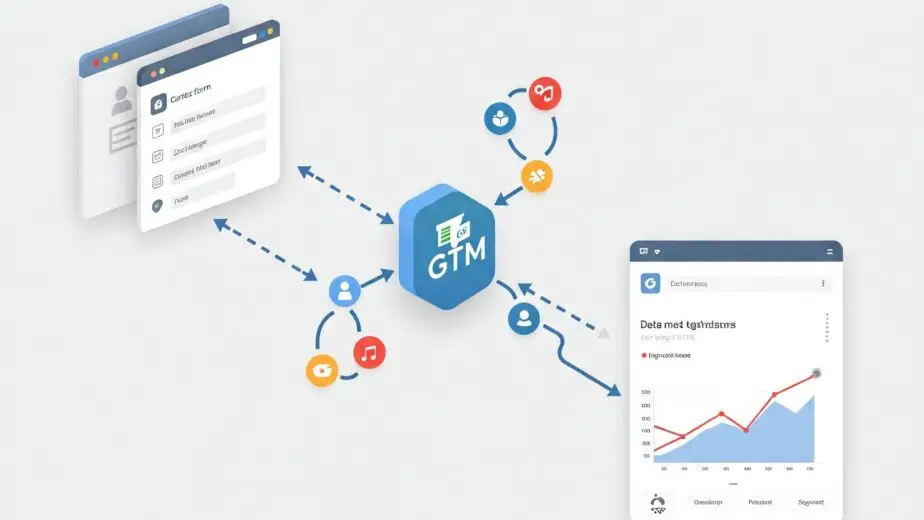Unlock Explosive Growth: 10 Content Marketing Hacks to Dominate 2025
The content marketing landscape in 2025 is faster, smarter, and more competitive than ever. Sticking to the same old strategies won’t just stall your growth; it might send you backward. To truly stand out and accelerate your results, you need to think like a growth hacker – experimenting, optimizing, and leveraging every available advantage.
Forget slow and steady for a moment. It’s time to inject some high-impact tactics into your strategy. Here are 10 content marketing growth hacks designed to give you an edge in 2025:
[Insert Engaging Image Here – e.g., a rocket launching labeled “Content Growth,” a graph showing exponential upward trend, abstract network connections]
1. AI-Powered Hyper-Personalization at Scale:
- What it is: Using AI tools to analyze user data (behavior, preferences, past interactions) and dynamically tailor content experiences in real-time across your website, emails, and even social feeds.
- Why it’s a hack: Moves beyond basic segmentation to deliver truly individual experiences, drastically increasing engagement, conversion rates, and loyalty without manual overwhelm.
- How to try it: Explore AI platforms that integrate with your CMS and CRM to personalize content blocks, headlines, and CTAs based on user profiles. Start with high-traffic pages or key email segments.
2. Hyper-Repurposing into Micro-Content:
- What it is: Taking one core piece of content (webinar, long-form blog post, podcast) and systematically breaking it down into dozens of smaller, platform-specific assets (short video clips for TikTok/Reels, quote graphics for Instagram, discussion prompts for LinkedIn, key stats for Twitter).
- Why it’s a hack: Maximizes the ROI of your initial content creation effort, dramatically increases reach across diverse platforms, and caters to short attention spans.
- How to try it: Create a repurposing checklist/workflow. Use AI video editing tools (like Descript, Pictory) to quickly generate clips and social media tools (like Buffer, Hootsuite) to schedule the micro-content blitz.
3. Interactive Lead Magnets 2.0:
- What it is: Moving beyond static PDF checklists to engaging interactive tools like calculators (ROI calculators, savings estimators), quizzes (personality assessments related to your niche), or simple configurators that provide instant value in exchange for an email.
- Why it’s a hack: Higher perceived value leads to significantly better conversion rates than standard lead magnets. They also pre-qualify leads based on their inputs.
- How to try it: Use tools like Outgrow, Typeform, or custom development to build simple, value-driven interactive tools relevant to your audience’s pain points.
4. Community-Driven Content Creation Loops:
- What it is: Actively sourcing content ideas, questions, and even full pieces of user-generated content (UGC) directly from your community (social media groups, forums, Slack/Discord channels) and then feeding the finished content back to them for validation and promotion.
- Why it’s a hack: Ensures content relevance, builds strong community ties, and turns your audience into active promoters, creating a powerful organic growth loop.
- How to try it: Regularly poll your community for topic ideas. Run contests for the best user-submitted tips or stories. Feature community members in your content (with permission!).
5. Predictive Content Topic Analysis:
- What it is: Using AI and data analysis tools to not just see what’s currently trending, but to predict future topic relevance and search intent based on emerging patterns, competitor movements, and industry shifts.
- Why it’s a hack: Allows you to create content before it peaks in popularity, establishing authority and capturing traffic ahead of the competition.
- How to try it: Explore advanced SEO tools with trend forecasting features (e.g., SEMrush Topic Research, Google Trends explorations, specialized AI content planning tools). Analyze competitor content velocity on emerging topics.
6. Voice & Conversational SEO Optimization:
- What it is: Specifically optimizing content not just for keywords, but for natural language questions and conversational queries used in voice search (smart speakers, phone assistants) and AI chatbots.
- Why it’s a hack: Captures traffic from the growing segment of voice searches and positions your content as a direct answer provider, boosting visibility in AI answer engines.
- How to try it: Structure content with clear question-answer formats (FAQ sections are great). Use conversational headings and language. Leverage Schema markup (FAQPage, HowTo) to help search engines understand context.
7. Strategic Content Partnerships & Swaps:
- What it is: Collaborating with non-competing businesses or influencers who share a similar audience. This could involve guest blogging, co-hosting webinars, swapping newsletter features, or co-creating research reports.
- Why it’s a hack: Instantly taps into a new, relevant audience, builds backlinks and authority, and shares the content creation load.
- How to try it: Identify potential partners with similar audience demographics but different offerings. Propose a mutually beneficial content collaboration with clear goals and promotion plans.
8. Data-Driven Content Refreshing Blitz:
- What it is: Systematically identifying high-potential but underperforming older content (e.g., ranks on page 2, gets some traffic but low engagement) and performing a focused refresh – updating stats, adding new insights, improving visuals, optimizing for current SEO best practices, and then re-promoting it heavily.
- Why it’s a hack: Often requires less effort than creating new content from scratch but can yield significant gains in traffic and rankings by leveraging existing authority.
- How to try it: Use Google Analytics and Search Console to find pages with ranking/traffic potential. Prioritize based on business value. Schedule regular content audits and refreshes.
9. Gamified Content Experiences:
- What it is: Incorporating game mechanics like points, badges, leaderboards, or progress bars into your content or learning experiences (e.g., multi-part courses, resource hubs).
- Why it’s a hack: Increases user engagement, encourages repeat visits, fosters a sense of accomplishment, and can make learning or content consumption more enjoyable and shareable.
- How to try it: Start simple. Add a progress bar to a multi-page guide. Offer a simple points system for completing modules in an online course. Use quiz platforms that have built-in scoring.
10. Leveraging Niche Expert Collaborations:
- What it is: Instead of just focusing on broad influencers, identify and collaborate with highly respected experts within specific niches of your industry for interviews, quotes, joint content pieces, or expert roundups.
- Why it’s a hack: Lends deep credibility and authority to your content. Taps into the expert’s dedicated (often highly engaged) audience. Provides unique insights your competitors might miss.
- How to try it: Identify true experts (authors, researchers, practitioners) in specific fields relevant to your audience. Reach out with a clear collaboration proposal that respects their expertise and time.
Ready to Grow?
Content marketing in 2025 demands agility and a willingness to experiment. Not every hack will be a home run for every business, but the key is to test, measure, and iterate. Pick one or two of these growth hacks that resonate most with your brand and audience, implement them strategically, and watch your content engine accelerate.
What other growth hacks are you experimenting with? Share your thoughts in the comments below!



